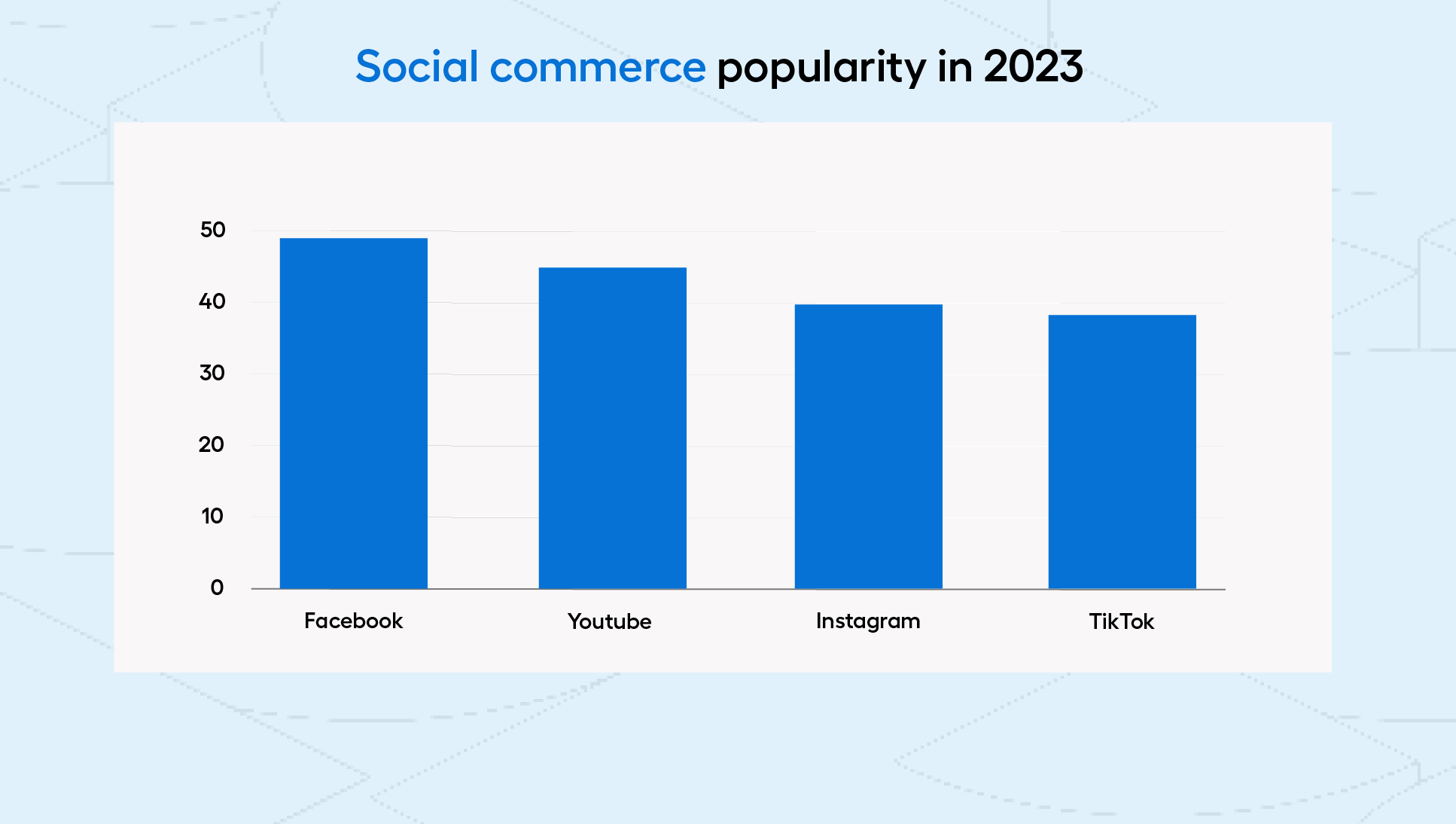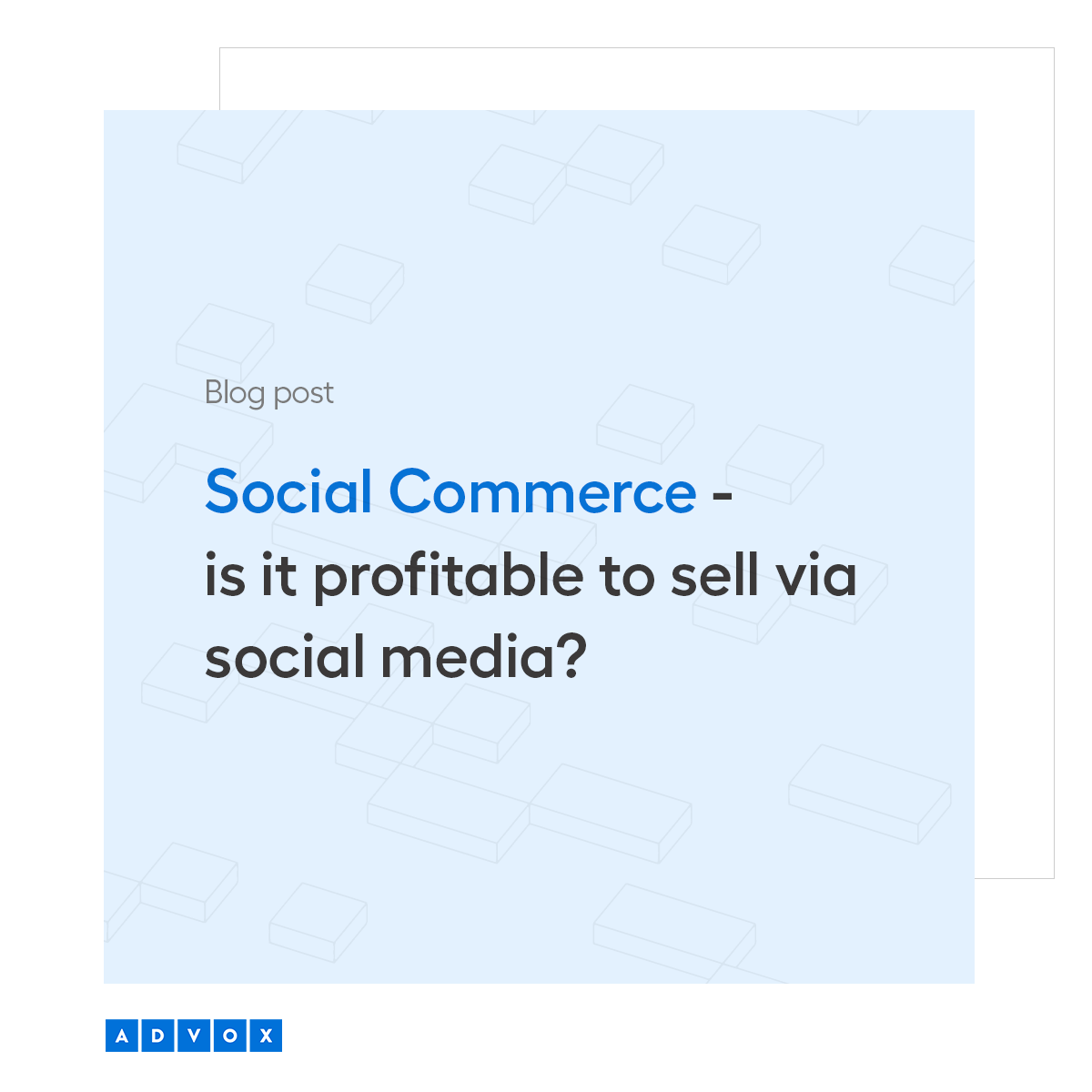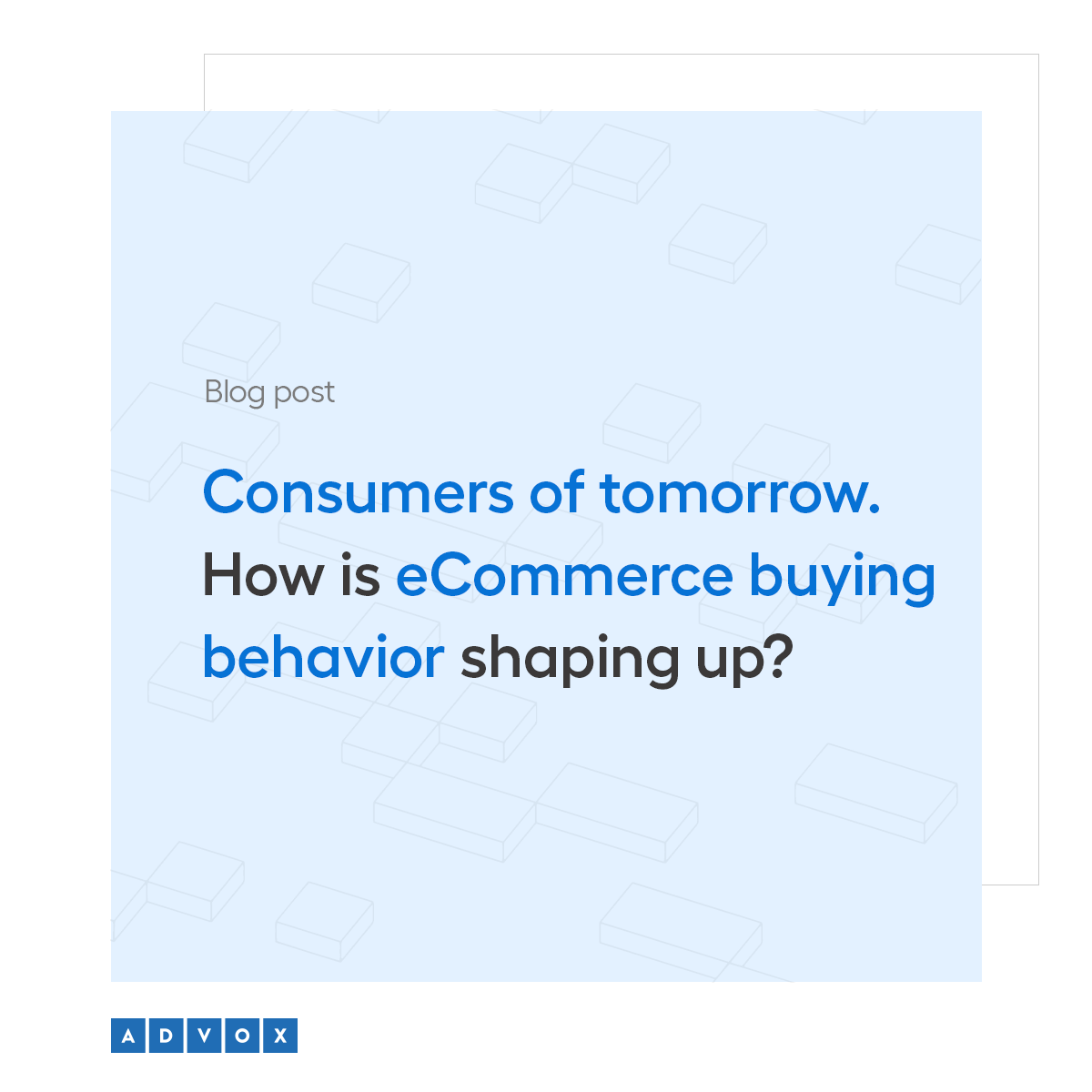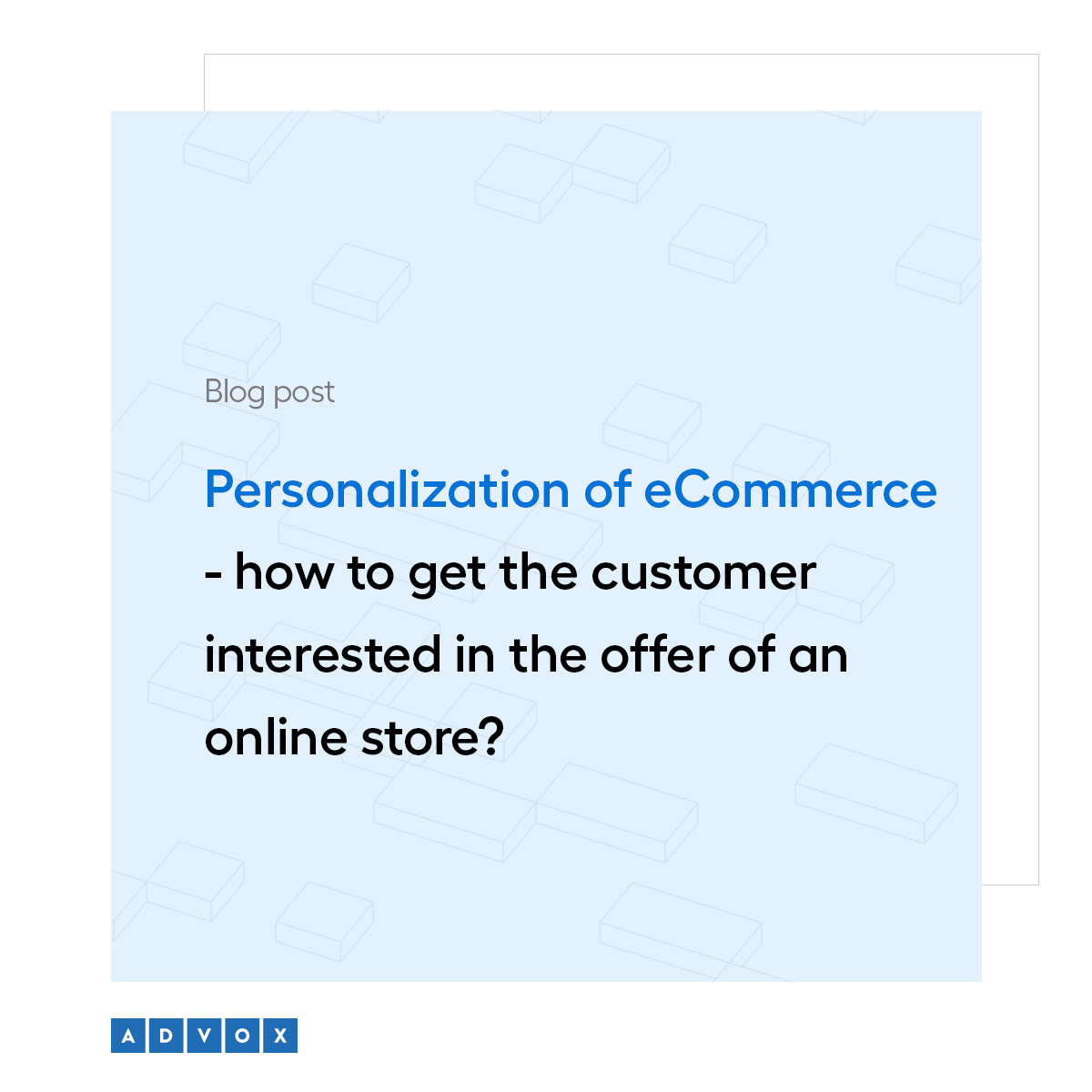Table of contents
- What is social commerce all about?
- To start with - where is the best place to sell on social media?
- Social commerce in 2024 - new shopping trends on social media
- Why is it worth betting on social commerce?
- How to effectively sell on social media?
- Will Social Commerce Work in the B2B Industry?
- Social commerce = eCommerce?
- Facebook - 49%
- YouTube - 46%
- Instagram - 40%
- TikTok - 39% (it's worth noting that this is the most popular social commerce platform among Generation Z - 68% of young shoppers use it).
- filters - AR (augmented reality) filters allow users to virtually try on products or interact with them in their surroundings. You can also create decorative and aesthetic overlays on photos promoting products (e.g., filters with interesting CTAs) or quizzes that engage users and help them choose the most suitable product.
- stickers - create your own virtual stickers with your brand logo, promotional slogans, or funny graphics. Users will be happy to use them in their stories and posts, increasing the reach of your brand.
- challenges - user engagement can also be built through marketing initiatives such as challenges. Create a challenge related to your products or brand values, and users will gladly participate, sharing their experiences and content related to your brand.
- shorter purchasing process - shopping on social media platforms is often faster and easier than in traditional online stores. The most popular social media platforms allow users to browse products, add them to their carts, and make payments without leaving the platform.
- increasing probability of placing an order - shopping on social media platforms is often faster and easier than in traditional online stores. The most popular social media platforms allow users to browse products, add them to their carts, and make payments without leaving the platform.
- greater trust - social commerce builds trust through authentic user-generated content (UGC) and influencer recommendations.
- omnichannel support - social media platforms seamlessly integrate with other sales channels, such as the store's website or mobile app. This allows customers to navigate between different channels during shopping seamlessly.
- access to customer data - social commerce platforms provide valuable data on customer behaviour and preferences. This information can be used for content personalization, optimising marketing campaigns, and improving the overall customer experience.
- Carefully select communication channels - you don't have to be present on all social media platforms. Choose those that are most popular among your target audience and best suited to the nature of your business. Also, remember that each platform has its own specifics and requires content tailored to it.
- Stay up to date - regularly monitor not only trends in content creation but also changes in platform algorithms. Based on this, you'll be able to adjust your strategy to current conditions.
- Embrace authenticity - build relationships with customers based on authenticity and transparency. Users appreciate honesty and the human character of a brand. In the era of AI-generated content, be cautious not to overuse this type of content - users may perceive your store's profiles as "too robotic" and simply uninteresting, which will discourage them from visiting, or even purchasing from, your e-store.
- Build engagement - respond to comments, ask questions, and engage in conversations with users. The more engaged you are, the greater engagement you'll generate among your followers.
- Maintain consistency - it's important for your communication on social media to be consistent with your overall marketing strategy.
- Remember analytics tools - remember that for your social media strategy to be effective, it must have a predefined and measurable goal. Regularly analyse your actions (e.g., by examining indicators such as SSI, or Social Selling Index) on social media platforms to see what works well and which areas need improvement.
77% of online shoppers discover new products and brands on social media (according to Statista). This phenomenon can be precisely termed social commerce - but what exactly lies behind this term, which is becoming an extremely important (even crucial) part of the strategy for online sellers? In this article, we'll take a closer look at the trends in social commerce for the year 2024, with the help of which your sales on social media will be maximally effective. Read on and get inspired!
What is social commerce all about?
In its strictest sense, social shopping means making online purchases directly on a social media platforms (e.g. Facebook, Instagram, TikTok). However, in a broader context, social commerce encompasses a comprehensive set of activities and strategies on social media aimed at convincing potential customers to make purchases in an online store. This may include creating engaging content, collaborating with influencers, and running advertising campaigns.
In short - social commerce is the harmonious combination of social media with online shopping, creating seamless and attractive shopping experiences for users, perfectly aligned with their preferences and daily habits.
To start with - where is the best place to sell on social media?
Social media has become an integral part of the lives of a significant portion of society. For many, they are an inseparable companion on the journey to work, while waiting in line, or simply during moments of relaxation and leisure.
By the end of 2023, the number of social media users had reached over 4.95 billion, with each of them averaging the use of 6 to 7 different applications. With such an impressive reach, as well as the diversity of platforms, it is crucial to understand precisely where to best sell your products. According to a study conducted by eMarketer, the most frequently chosen social media platforms for online shopping are:
 Source: emarketer.com
Source: emarketer.com
However, other platforms should not be forgotten, as they also provide attractive sales opportunities. Pinterest stands out with its eCommerce potential, particularly suitable for promoting visually appealing products (handicrafts, clothing, or interior decor items). Additionally, new players in the social media market, such as Threads from Meta or Bereal (which recently introduced the ability to create business accounts), should not be overlooked, as they are gaining increasing popularity among users.
Social commerce in 2024 - new shopping trends on social media
Social commerce is a dynamically evolving sales channel that opens up new opportunities for companies to reach customers (and thus increase sales). However, to fully leverage the potential of social media, it is essential to keep track of all changes. What should particularly catch your attention this year?
Search
Social media not only changes how we spend time online but also transforms habits regarding information searching. More and more internet users are abandoning traditional search engines in favor of social media platforms. For example, when looking for dinner ideas, they browse recommended restaurants on Instagram, view photos of dishes, and read other users' opinions. When there is a need to find reviews of a specific product, they prefer to enter its name into the YouTube search engine to get the fullest picture. These changes have led to Google losing its dominant position for the first time in a long while. Interestingly, according to Adobe's report, a significant portion of Generation Z (64%), as well as Millennials (49%), consider TikTok to be equivalent to a traditional search engine.
How to use this trend in practice? Ensure proper descriptions, hashtags, and captions (e.g., added to videos) in your content to make it easier for users to find them in the platform's search engine.
User Generated Content
Influencer marketing, which involves promoting products or services in collaboration with influential individuals on social media, is already standard practice. This market has grown to astronomical proportions in recent years, and influential creators are being likened to celebrities. For this reason, many influencers are losing authenticity and credibility in the eyes of their audience, and users are increasingly unable to identify with their lives. In contrast, smaller creators known as micro-influencers or creators of User Generated Content are gaining popularity. Although they have smaller followings, the relationships they build with their followers based on authenticity and trust make them attractive partners for brands.
How to use this trend in practice? Ensure proper descriptions, hashtags, and captions (e.g., added to videos) in your content to make it easier for users to find them in the platform's search engine.
 An example of using UGC on a product page in Zalando's marketplace
An example of using UGC on a product page in Zalando's marketplace
Customer-centric communication
Social media is not just about content, photos, and videos - it's also about communication tools. Applications such as Facebook Messenger, Instagram, or WhatsApp enable users to communicate freely with friends, family, and now... with brands. By using these communication channels to connect with your customers, you can bring them even closer. By giving them the opportunity for direct conversation with your store, you create an atmosphere of trust and openness. Moreover, communicating with customers through social media can significantly accelerate and facilitate the process of resolving any issues or doubts. By quickly responding to questions or handling complaints via social media, you demonstrate to customers that their opinion and satisfaction are your priority.
How to use this trend in practice? Popular messaging apps offer integration with external tools that can help streamline communication. With solutions such as Talkative, you can automate handling simple questions and tasks using artificial intelligence, as well as send welcome messages to new customers or thank-you messages after a purchase.
Photos, Videos, and Filters
TikTok, Snapchat, and Instagram are all platforms where users regularly post their own photos and videos, sharing them both publicly and in private messages. This is another area you can use to increase your social media sales. How? By encouraging users to share photos or videos related to your brand. Social media platforms offer a wide range of tools that can help you do this (and are constantly introducing new features). Use them to engage users and generate buzz around your brand.
Here are a few ideas on how to use this trend in practice:
Why is it worth betting on social commerce?
According to Statista's predictions, revenues generated by social media shopping will reach $1.2 trillion in 2024. Social commerce is no longer just a passing trend but is becoming an essential element of the marketing strategy for companies looking to reach the widest possible audience and increase sales. If you haven't yet been convinced of the potential of this dynamically evolving channel, here are a few key reasons why you should incorporate it into your business strategy.
How to effectively sell on social media?
Users of social media consume content in a specific way. They often scroll through applications quickly and just as frequently forget about them when something else catches their attention. For example, TikTok users spend an average of 95 minutes per day watching short videos, which translates to hundreds of videos of diverse content. Therefore, to make your brand memorable to browsers, you must remember to provide content that is not only visually appealing but also easy to digest in a short amount of time. Formats such as short videos, animations, or graphics with a strong message can be an effective strategy.
What else should you pay attention to? We've prepared some key tips to help you successfully sell on social media.
Will Social Commerce Work in the B2B Industry?
Most successful examples of social media sales are primarily stories of B2C stores (business to customer). Naturally, the question arises whether social commerce is a solution that will also work in interactions between professionals, i.e., in the B2B (business to business) industry?
The answer to this question is "yes," but only if you adapt the tools and communication channels accordingly. In the case of B2B, a good way to approach this type of sale is through "social selling," most commonly utilized on the LinkedIn platform. This involves building relationships with potential clients and business partners through social media. Establishing new relationships and sharing experience and knowledge is an effective way to strengthen loyalty, as well as generate new leads or increase brand awareness.
Social commerce = eCommerce?
Social commerce has come a long way (and is still evolving). The initial approaches to selling on social media mainly focused on simple integrations with traditional eCommerce platforms, offering limited shopping experiences. However, social commerce is now a comprehensive ecosystem - features such as in-app payments, shoppable posts, or intelligent chatbots have become commonplace, enabling smooth and integrated shopping. And this is not the end...
Looking into the future, even more advanced experiences are projected, including the use of augmented reality or artificial intelligence (which are already beginning to play an important role). All this suggests that the line between social media and eCommerce is becoming increasingly fluid, and social commerce is no longer just an add-on, becoming an integral part of eCommerce.
Are you ready to start harnessing the full potential of social commerce? Start exploring it today and enhance your online sales capabilities!







